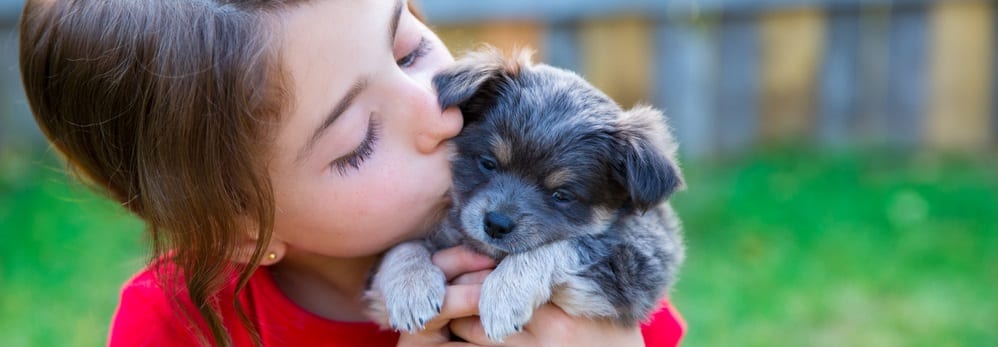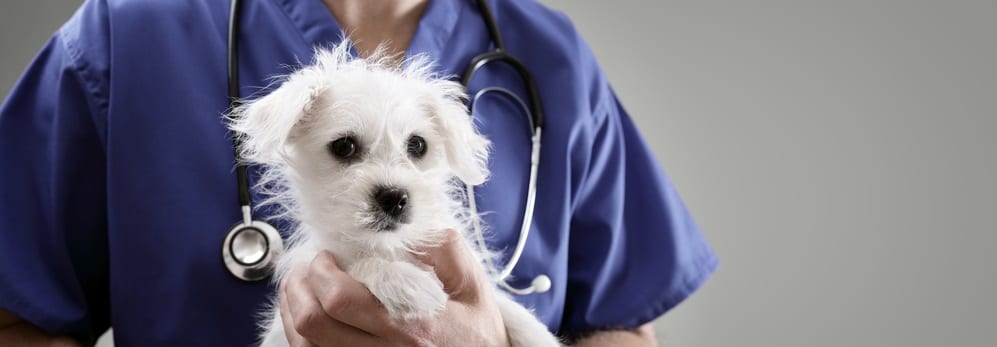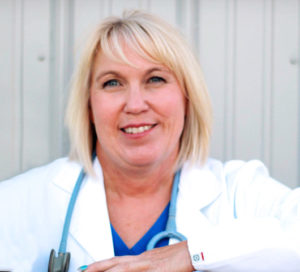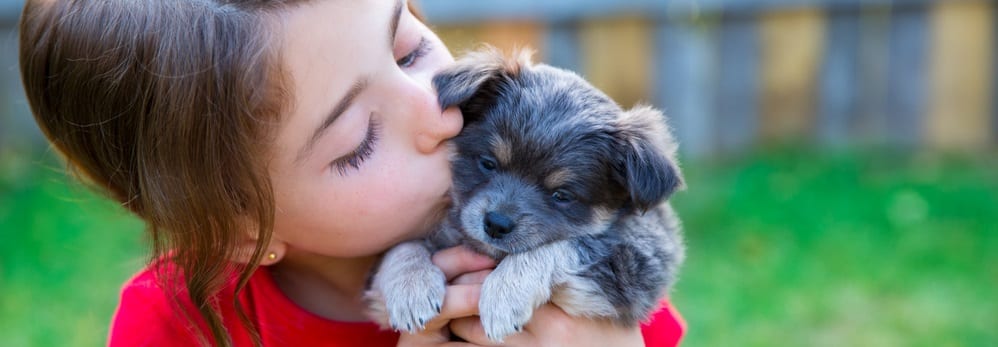Raising a puppy is a life-changing experience. It’s a privilege and a joy, but it doesn’t come without its fair share of challenges and frustrations. In truth, ensuring that your puppy lives a long and happy life can be an onerous task at times; you have to think about training, proper nutrition, vet checkups, grooming, and exercise. But that’s the bargain you willingly commit to when you agree to be your pup’s master. Therefore, as you enter this new stage, the main question you need to ask yourself is, “What do puppies need to grow healthy?”
Below, we’ll answer this and more so that you can provide your soon-to-be best friend with everything it needs throughout the maturation process.
What Puppies Need to Grow Healthy

If you’re new to this, there’s a long catalog of items you’ll need to purchase in preparation for your new furry family member. A “what puppies need” list might look as follows:
- Bedding, pads, and blankets
- Bones or chew toys
- Collar with ID
- Crate or dog carrier
- Dog bed
- Dog brush or comb
- Dog nail trimmer
- Dog toothbrush and dog-safe toothpaste
- Food and water dishes
- Grooming brush
- Healthy dog treats
- Leash
- Pet-safe home cleaner
- Playpen
- Poop bags
- puppy gates
- Puppy-friendly toys
- Puppy-safe shampoo
- Quality puppy food
- Travel bag
- Walking harness
You will eventually need all of these things over the course of your dog’s life, some sooner than later. Consequently, you save yourself from worry or additional trips to the store for “that one item” by simply getting everything ahead of time. By being proactive, you make the process easier and ensure that your puppy has all of the tools it needs to thrive.
In addition to the materialistic items that a puppy needs to grow health, they also need proper nutrition as well. Just as humans feed their babies formula during the first year or so of their life to ensure proper growth and development, the same can be said for puppies. Vetericyn ALL-IN™ Puppy utilizes a number of milk factors that help deliver key nutrients to the puppy as they transition off of their mother’s milk.
A Proper Diet
As the owner of a pet, it’s your new job to set beneficial patterns and lifestyle habits for your pup. One of the most fundamental building blocks in a dog’s health is its dietary standards—and you begin laying the groundwork for this from infancy. Put succinctly; healthy food makes for a healthy dog. So, you need to create a custom meal plan suited to your pup’s nutritional needs.
Most pups will wean from mother’s milk approximately a month after birth. That said, even when you take them off a diet that solely consists of milk, their bones and body will still be fragile and growing rapidly, which is why most vets will recommend providing your pup with a daily nutritional supplement.
After month 1, you’ll want to begin crafting a high protein diet. According to the American Society for the Prevention of Cruelty to Animals (ASPCA):
Puppies require up to twice the energy intake of adult dogs and, depending on the breed, will need to be fed a food that contains 25 to 30% protein. Remember, the adult size of a dog is determined genetically—not by how fast the animal grows. Do not overfeed in an attempt to accelerate a puppy’s growth rate. If they are allowed to overeat, puppies can consume too many calories, grow too rapidly, and develop health problems.
Most vets will recommend a blend of highly digestible proteins, the optimal proteins being:
- Duck
- Salmon
- Sheep
- Venison
In addition, there are several foods that you cannot feed a dog, no matter their age. The following foods are toxic and can lead to severe reactions or health complications and should be avoided at all costs. According to the American Kennel Club, these include:
- Chocolate
- Garlic
- Raisins
- Cinnamon
- Almonds
- Macadamia nuts
Vaccinations
A puppy will need to have vaccinations once it has been weaned. Naturally, what you do and don’t need will depend greatly upon several elements. Some pups are considered to be “high risk” and will require a more comprehensive vaccination program. Factors that may impact this include:
- The dog’s breed and risk factors
- The litter your puppy came from
- The puppy itself
- Your vet’s recommendations
- The area of the country you reside in

Vaccines are the safest and most cost-effective ways to prevent infectious disease and has become a cornerstone of canine health. Per the American Animal Health Association (AAHA):
The AAHA Canine Vaccination Guidelines support the implementation of effective, individualized pathways for the prevention of infectious diseases of dogs. Implicit in the Guidelines is the integral role vaccination plays in the veterinary profession’s emphasis on preventive healthcare and regular exams as the foundation of a long, active, and rewarding relationship between pets and their human companions.
This guideline then recommends that most every puppy receive the following core vaccines:
- Distemper
- Parvovirus
- Hepatitis
- Parainfluenza
- Rabies
Some of these, like DHPP, are given as a combination of medicines. That said, the generally accepted puppy vaccination schedule looks as follows:
- 6-8 weeks – Distemper and parainfluenza
- Optional shots – Bordetella
- 10-12 weeks – DHPP (distemper, hep, parainfluenza, and parvovirus)
- Optional shots – Bordetella, Coronavirus, Leptospirosis, Lyme disease
- 12-24 weeks – Rabies
- 14-16 weeks – DHPP
- Optional shots – Coronavirus, Leptospirosis, Lyme disease
- 12-16 months – Rabies DHPP
- Optional shots – Bordetella, Coronavirus, Leptospirosis, Lyme disease
- Every 1-2 years – DHPP
- Optional shots – Bordetella, Coronavirus, Leptospirosis, Lyme disease
- Every 1-3 years – Rabies
Exercise
Although puppies need much less formal exercise than fully-grown dogs, it’s always important to make sure that your dog stays active, as it remains as an important aspect of their growth, socialization, and health. Regular exercise promotes all of the following:
- Allows them to release pent up energy and stops destructive behavior, such as:
- Attacking the garbage
- Chewing
- Digging
- Excessive barking and/or whining
- Jumping on people
- Night hyperactivity
- Rough play
- Scratching
- Builds muscle and bone strength
- Counteracts obesity and its associated health risks
- Creates physical, social, and intellectual stimulation
- Forges a bond between master and hound
- Helps prevent digestive issues
- Increased socialization with people and other dogs
- Increases their agility
- Promote house training by having scheduled walks
- Strengthens the heart
For puppies, you need to worry about over-exercising your young pooch. Over-exercising which could be just as dangerous (if not more so) than under-exercising your young pup since it can impact their musculoskeletal development, which can cause mobility issues. Therefore, you need to carefully build up a puppy’s stamina over time through a combination of on-leash walking and off-leash playing, and keep an eye out for the signs of fatigue while you do. Per the AKC:
Puppies need much less exercise than fully-grown dogs. If you over-exercise a growing puppy, you can overtire it and damage its developing joints, causing early arthritis. A good rule of thumb is a ratio of five minutes exercise per month of age (up to twice a day) until the puppy is fully grown, i.e. 15 minutes (up to twice a day) when three months old, 20 minutes when four months old etc. Once they are fully grown, they can go out for much longer. It is important that puppies and dogs go out for exercise every day in a safe and secure area, or they may become frustrated.
In addition, it’s crucial you avoid forced exercises such as:
- Excessive ball or frisbee throwing and catching.
- Jogging or running with a puppy or dog.
- Running your pet alongside your bike or skateboard.
- Taking fast-paced or long walks with your puppy.
Grooming
Although puppies can start getting groomed as soon as 8 weeks, it’s recommended that you start them at 12 weeks, after they’ve had a little more time to grow and socialize. According to the Halifax Humane Society:

The very first grooming appointment is an introduction to the puppy and the owner to the world of grooming. The puppy will be introduced to a bath, blow–drying, nail clipping, and slight trimming. We do not recommend having a puppy be given a full hair cut the first time being groomed. The reason behind this is you are forcing the puppy to stand still and be handled for 1.5 hours. This is a lot to ask of a puppy. It would be like asking a one-year-old child to sit without moving, going to the bathroom, or play with any toys for 45 minutes.
Grooming is not simply about ensuring that your dog is clean and looks nice, it actually has a significant impact on your dog’s physical health. Benefits include:
- Promotes healthy coat and skin
- Allows for early detection of issues with ears, skin, teeth, etc
- Reduce risk of infections, especially in the paws, eyes, mouth, and genital areas
- Lets you spot parasites such as fleas early on
- Ensures that the anal glands are being expressed
If you’d prefer to groom your puppy in the comfort of your own home, you can use a safe, hypoallergenic pet shampoo like Vetericyn’s FoamCare Pet Shampoo to do the trick.
What Do Newborn Puppies Need?
As you embark upon this special journey, it’s important that you take the time to consider carefully and ask yourself, “What do newborn puppies need?” By doing your research ahead of time, you’ll make the adoption transition seamless and ensure that your relationship begins on the right paw.
When it comes down to it, all you have to do to ensure that your puppy grows healthy involves nutritious food, the recommended shots, appropriate exercise, and semi-frequent grooming. Stay proactive, and your canine companion will be with you for a long time!
Sources:
ASPCA. Dog Nutrition Tips. https://www.aspca.org/pet-care/dog-care/dog-nutrition-tips
AKC. Human Foods Dogs Can and Can’t Eat. (2019). https://www.akc.org/expert-advice/nutrition/human-foods-dogs-can-and-cant-eat/
AAHA. 2017 AAHA Canine Vaccination Guidelines. (2017). https://www.aaha.org/globalassets/02-guidelines/canine-vaccination/vaccination_recommendation_for_general_practice_table.pdf
AKC. Your complete guide to first-year puppy vaccinations. (2019). https://www.akc.org/expert-advice/health/puppy-shots-complete-guide/
AKC. Puppy and dog walking tips. https://www.thekennelclub.org.uk/getting-a-dog-or-puppy/general-advice-about-caring-for-your-new-puppy-or-dog/puppy-and-dog-walking/
Kukes, Barry. Halifax Humane Society. At what age can I start getting my puppy groomed? (2017). https://www.halifaxhumanesociety.org/At-What-Age-Can-I-Start-Getting-My-Puppy-Groomed–1-3.html.
 Dr. Melinda J. Mayfield-Davis, DVM, WCHP-AH, brings over 20 years of experience in veterinary medicine. She is the Technical Services Veterinarian with Innovacyn, Inc., parent company of Vetericyn Animal Wellness. She received her DVM from Oklahoma State University and now resides in Southeast Kansas with her husband, two children, four dogs, and six horses. Prior to working with Innovacyn, Dr. Mayfield owned and operated the Animal Care Center in Columbus, KS.
Dr. Melinda J. Mayfield-Davis, DVM, WCHP-AH, brings over 20 years of experience in veterinary medicine. She is the Technical Services Veterinarian with Innovacyn, Inc., parent company of Vetericyn Animal Wellness. She received her DVM from Oklahoma State University and now resides in Southeast Kansas with her husband, two children, four dogs, and six horses. Prior to working with Innovacyn, Dr. Mayfield owned and operated the Animal Care Center in Columbus, KS.


